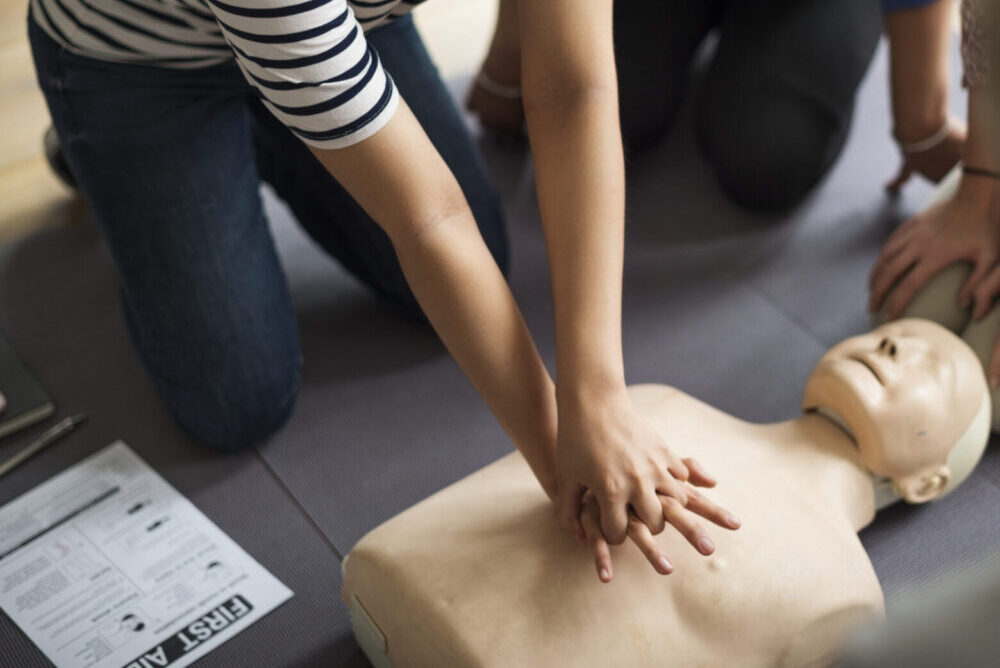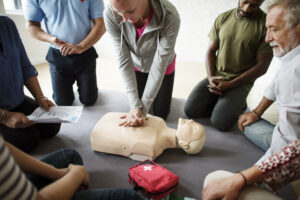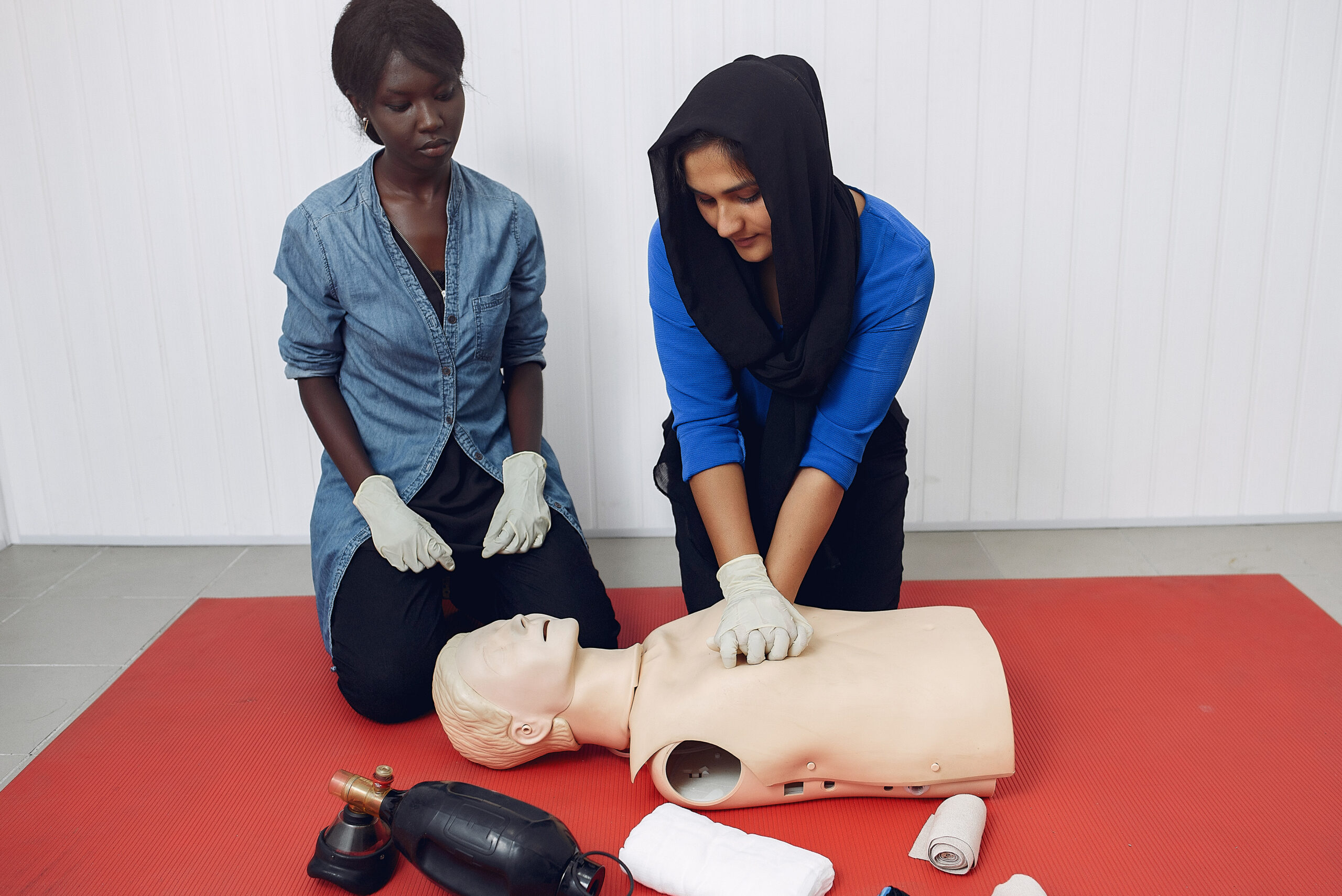A Complete Guide to the Number of First Aiders a Workplace Needs

Workers’ First Aid, health, and safety are essential components of every workplace. The Health and Safety Code of 1981 states, “Every employer shall provide, or ensure that there are provided, such equipment and facilities as are adequate and appropriate in the circumstances for enabling first aid to be rendered to his employees if they are injured or become ill at work.”
To enforce the above regulation, employers, employees, and trained personnel need to know First Aid basics to make a significant difference in handling emergencies. But how do you determine how many first aiders your workplace needs?
As an employer entrenched in health and safety in the workplace, it is vital to provide first aid courses for those involved in administering First Aid.
The first step in managing risk is conducting a risk assessment, which helps determine how many first aiders your workplace needs.
First Aid Risk Assessment
The number of first aiders your workplace requires depends on your industry’s risk level and workforce size. Here’s how you can assess these factors:
1. Industry Risk Level
Diverse industries carry varying risk levels. These risk levels are categorised as High-risk and low-risk industries.
- High-risk workplaces involve working with dangerous activities or high-risk equipment like mining, construction, mobile plants, railways, and health sectors.
- Low-risk workplaces: the risk is low and does not result in serious injury or illness. Low-risk workplaces are your office buildings, tertiary institutes, etc.
2. Workforce Risk Factors
First Aid in the workplace is your primary concern as an employer. It would be best if you based your workforce risk assessment on the following factors.
- Workforce size impacts your first aid needs. Larger workplaces may require more first aiders to ensure coverage across various areas.
- The nature of your workforce also determines the number of first aiders needed. Does your workforce mainly consist of young workers? Are there employees with disabilities and health issues?
- Determining how much of your workforce lives on the premises or whether they work remotely would be best.
3. Shifts and Work Hours
In your first aid coverage, you should factor in how much of your workplace operates multiple shifts or has extended work hours. Emergencies can occur at any time, so having first aiders available during all shifts is crucial.
4. Workplace Size and Layout
The size and layout of your workplace play a significant role in determining the number of first aiders required. Larger workplaces or those with complex layouts may need more first aiders to ensure quick response times in an emergency.
When planning the layout of your workplace, always ensure the pathways and emergency exits are free and clear of obstruction.
How To Determine the Number of First Aiders Your Workplace Needs

Once your risk assessment is complete, you are ready to determine how many first aiders your workplace needs.
1. Low-Risk Workplaces
The HSE suggests for low-risk workplaces like offices to have at least one trained first aider for every 50 employees. It recommends if your office has 100 employees, employers should have at least two trained first aiders.
You should also factor in the possibility of the first aider falling ill and unavailable should an emergency occur. It is, therefore, best to have a second trained First Aider in such circumstances.
2. Medium Risk Workplaces
For workplaces with a moderate level of risk, like warehouses or manufacturing facilities, employers must consider having one trained first aider for every 25 employees.
3. High-Risk Workplaces
High-risk workplaces, like construction sites, the mining industry, or chemical plants, should aim for at least one trained first aider for every ten employees.
High-risk workplaces also require first-aiders with specialised training to handle hazards like chemical burns or asphyxiation from chemical fumes.
Remote or Isolated Workplaces
You may need additional first aiders if your workplace is remote or isolated, where emergency services may take longer to arrive.
Is A First Aid Appointed Person Necessary in The Workplace?
The First Aid Regulations 1981 requires all workplaces to have an employee appointed to conduct first Aid. This person does not require practical First Aid training; however, they need training to operate First Aid equipment, perform basic First Aid, and the contact numbers for emergency services on hand.
As a rule, low-risk workplaces need one First Aid Appointed Person for 25 or fewer workers. High-risk workplaces, however, need one First Aid Appointed Person for five or fewer workers.
Ensuring that the appointed person receives proper first-aid training is essential. This typically involves completing a recognized First Aid course, which will equip them with the skills and knowledge to respond to emergencies effectively.
The Role and Responsibility of First Aid-Appointed Persons

The First Aid Appointed Person is trained to manage First Aid facilities’ equipment and respond to minor injuries and illnesses. They also play a vital role in ensuring that First Aid arrangements in the workplace are up to standard and that employees have access to immediate care when needed.
First Aid Appointed Person will take over the duties or assist the First Aider in case the First Aider is unavailable to carry out their duties.
Looking for a First Aid Course?
Regulatory First Aid Requirements
The HSE requires every workplace to have a viable First Aid system to protect the employer and employee. Therefore, understanding the legal requirements for First Aid in the workplace is essential. These requirements vary for every workplace, so checking with your local authorities is crucial.
However, some standard First Aid guidelines include:
- First Aid Kits: Ensure you have fully stocked kits in easily accessible locations throughout the workplace.
- First Aid Training: it’s mandatory in many workplaces to have a detailed number of trained first aid employees. This number often depends on your workforce size and the risk level associated with your industry.
- Appointed Persons: Some health and safety regulations require the appointment of a specific person or persons responsible for first aid arrangements.
- Record-Keeping: Appointed First Aid personnel must maintain records of first aid training, accidents, and incidents, which is often a legal requirement.
Conclusion
Determining the number of first aiders your workplace needs is a vital aspect of protecting the safety and well-being of your employees. You should assess the risk level, consider your workforce size, and adhere to regulatory requirements before determining the number of first aiders you need.
By investing in first aid training and equipment, you not only comply with the law but also demonstrate your commitment to the health and safety of your employees.
Contact Us
For any information on our courses, please fill out the form to the right or call us on the number below.
